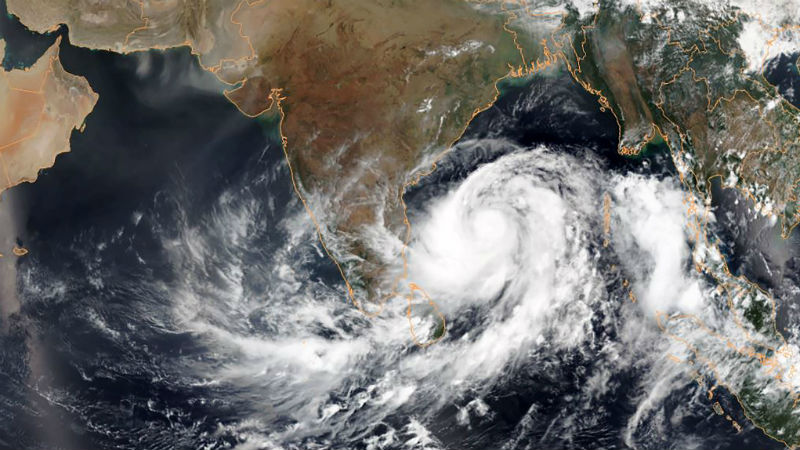
Tracking of cyclones in the oceans was never so easy a few decades ago. Space-based platforms assured accounting of each and every cyclone notwithstanding the place of origin. The field of Meteorology never had this luxury before the 60's of the last century. Many of the storms may go amiss for lack of surveillance, especially in uninhabited and inaccessible terrain including oceans.
Nearly 63 years ago on Oct 04, 1957, the former Soviet Union launched Sputnik-1, the first artificial satellite in orbit around the earth. The United State followed with its first operational satellite Explorer-1 in 1958. On April 1, 1960, NASA (National Aeronautics and Space Administration) launched TIROS-1(Television Infrared Observation Satellite), a first-ever weather satellite. Though it lasted only for 78 days but became the steppingstone for satellite weather technology. India launched its first communication satellite, INSAT-1A in April 1982 to operate in geostationary orbit. This was abandoned in Sep 1983, much earlier than its scheduled life, due to multiple snags. Kalpana-1 was the first dedicated meteorological satellite by ISRO using PSLV on 12Sep 2002.
With the technology advances in satellite meteorology, the tracking of storms became rather stupendous for multiple motives, saving life and property as the prime one. Loss of thousands of lives and demolishing hundreds of structures is history now and the damages have been successfully minimized. Global warming has made these storms more frequent and intense as well across the oceans.
In the Indian Ocean north of the equator, tropical cyclones can form throughout the year on either side of the Indian coastline, the Bay of Bengal to the east and the Arabian Sea on the west. The year 2019 was a hyperactive year with record 9 cyclones in the North Indian Ocean and Indian seas. The Bay of Bengal is responsible for the formation of some of the strongest and dreadful storms in the world. The frequency of cyclones in the Arabian Sea is a shade lower than of the Bay of Bengal. However, the basin does hold extremely severe cyclones. Super cyclone Gonu has been the strongest cyclone on record. However, the storms do not reach high intensity very often due to dry air coming from the arid Arabian Peninsula, strong wind shear and cool waters closer to the coastline in the northern parts of the sea.

Records started getting maintained from the year 1890 onward. The stats show that a maximum of 10 storms has formed in a single year in the Indian Seas. In the last 130 years, there have been only 4 years (1893,1926,1930,1976) when 10 cyclones formed. There have been active and mild cycles of storms like most other meteorological hazards. The decade of the 70's has been the most tortuous generating 66 storms between 1970 and 1979. The most lenient and sparing decade was just in the recent past when only 38 storms formed between 2000 and 2009. Despite the last two years i.e. 2018 and 2019 figuring amongst the hyperactive years, a total of 44 cyclones emerged between 2010 and 2019 with record 9 cyclones of last year after a gap of 44years.
Every storm does not make a powerful landfall and quite a few weaken either in the open waters or before hitting the coast. This is more so for the storms in the Arabian Sea and that too in the post-monsoon season (Oct-Dec). Two calamitous storms in the Indian Seas will always find a mention in the rogue's gallery: Cyclone Bhola striking Bangladesh(1970) and Odisha cyclone(1999).


